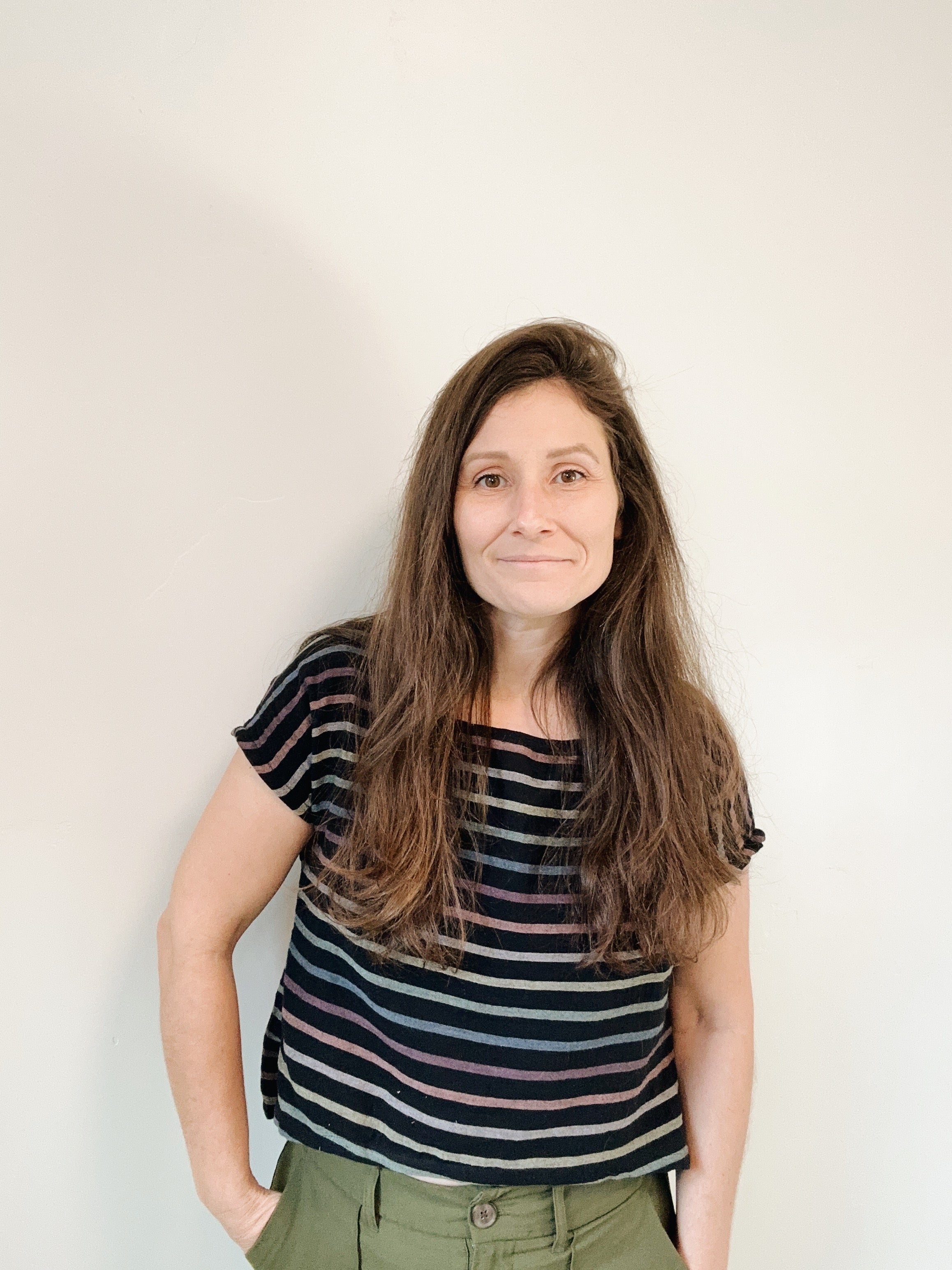Can I Sew Knits With Just a Sewing Machine?
At Gus + Steel we love designing for knits because they’re not only easy to wear but they are one of the most versatile, forgiving and stylish styles out there.
If you’ve ever looked at the seams of your t-shirts, you’ll see that they’re serged and you’ll quickly recognize that your sewing machine can’t make stitches like. Then you might jump to the conclusion that you don’t have what it takes to make amazingly comfy and wearable clothes for you and your family but… you’d be wrong!
You can absolutely sew knits with only a sewing machine AND you can get great results doing it.
Here’s a few things to know…
Needle-ittle help?
Not all needles are created equal. Actually, there are all types of needles for all types of jobs and you want to make sure you have the right type of needle and the right length of needle for the task at hand.
When working with knits you’ll want to use a ballpoint needle. Just like it sounds, the ballpoint needle has a rounded, ball-shaped end that pushes through the delicate individual fibers rather than skewering them. If you’re not using the right type of needle you risk skipped stitches and unruly bobbin threads and a handful of other issues your machine is bound to throw at you.
Ballpoint needles go by a few different names. Most often called “stretch” needles or “jersey” needles they’re each a little different but both are described as “medium ball points” by the Schmetz (they’re *the* needle people) website and meant for stretch fabrics. You’ll probably need to do a little experimenting to figure out which type of needle is best for your machine and fabric. It’s a good idea to have both types on hand but stretch needles always seem to be a bit pricey-er so, if you’re just going to try one, I suggest you try the jersey needles first.
I have found that jersey needles work best on my machine for just about any stretch fabric but when sewing on elastic, stretch needles are the only needles my machine likes.
You’ll also need the correct length of needle. To know which one is right for what you’re sewing you’ll need to consult your sewing machine’s manual. If you don’t have a paper copy, you almost definitely can find it online by Googling your sewing machines make and model “+ manual”.
Under Pressure?
Some sewing machines are just better at sewing knits than others. When I bought my Janome HD-1000 I bought it thinking that I would mostly use it for home sewing projects and crafts so, the “HD” meaning “Heavy Duty” made sense. However, it turns out I caught the clothes sewing bug and never looked back. In all honesty, if I had it to do all over again I wouldn’t have purchased that particular machine. It’s a beast that can sew through leather but it does not handle knits well. However, with a little trial and error and a little babying we’ve come to a workable arrangement.
My machine does not have an adjustable pressure presser foot. If yours does it’s a great place to start tuning in your machine to sew knits. If you find your first few seams are getting stretched out, reduce the pressure on the presser foot and you may find you’re good to go. If, however, you're still experiencing stretched seams, I suggest you invest in a walking foot. I like this one here (#ad) but you may want to investigate those that are made specifically for your machine.
Hands down, that one investment has made the most difference for me when sewing knits and quite honestly before I bought it I was considering throwing in the (jersey knit) towel. A walking foot does just what it says, it walks over your fabric rather than sliding over it and that reduces the chance that your fabric gets stretched out while you’re sewing it.
To zig-zag or not to zig zag?
Most knit sewing patterns, including Gus + Steel, will call for a serged or a zig-zag stitch when putting pieces together. Most modern sewing machines come with a zig-zag stitch and several other stretch stitches that are great for knits. It’s important that you learn what stitches your machine can produce and how to use them. For a quick guide to stretch stitches check out this video.
It’s an experiment!
Sewing knits on your sewing machine may be super straightforward and simple. Some machines are just better at handling knits than others. If you have any sewing experience you’ll likely be ahead of the curve since you’ll probably already know the terminology and some basics about construction. But, if your first attempt at sewing with knits on your sewing machine is less than stellar, I encourage you to try a few things; adjust your setting - a shorter stitch length can contribute to better stretch, try all the different stitches your machine can create, try different fabrics to see what results you can get, write things down as you experiment and pretty soon you’ll have a wealth of information from which you can draw to get the best results from your sewing machine. It’s all part of the journey and so worth it to create adorable clothes for you and your family. Who doesn’t love matching holiday p.j.’s - am I right?!
If you’re totally stoked and ready to get sewing on your sewing machine, I highly recommend starting with “The Boxy”. It’s a fun and easy pattern with great results and we’ve even created a video sew-along to take you through it step-by-step. Check it out here!
Let us know how it goes in the comments below.
Happy Sewing!
*As an Amazon Associate I earn from qualifying purchases.

